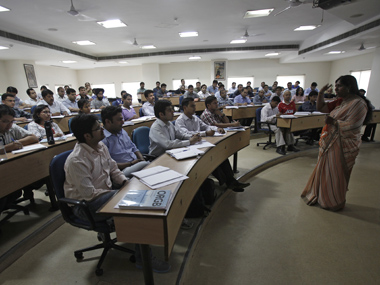As the most populous nation turns into a digitally-driven powerhouse, skilling its people should be its priority. Here’s how Budget 2023 can and should work out this pressing issue.
During the last few years, India’s businesses (including public sector entities) have relied increasingly on digital technologies to create value. Some of this digital adoption was ushered by the pandemic, and in other areas, digital technologies promised significant value creation. In the coming years, this digital momentum is only going to strengthen, especially considering the amiable policy landscape, rising competition, and investment in digital infrastructure from the government.
However, the viability of this digitally-driven economy is premised on the people that will drive it. Employment opportunities for low-skilled people are constantly on the decline, and digital skills are high in demand across all industries without exception. And as of now, 75 percent of Indian businesses report a skills gap.
If the current trends continue to persist, India is headed for a major skills deficit in the coming years. Today, only 49 percent of India’s young population is employable, and there is a significant disconnect between academic curriculums and industry requirements. In this light, UNICEF’s findings are not surprising: by 2030, 50% of India’s youth will not be employable, because they will lack the requisite education and skills.
Turning India’s growing population into human resources starts now – and Budget 2023 should focus on the following areas to make it happen.
Technology could be on our side
Impact Shorts
More ShortsThe impact of digital adoption on traditional roles is undeniable. In fact, technologies like AI are disrupting the roles of what could be called knowledge workers, and automation is eliminating the need for human efforts in some scenarios. But these technologies are also making people’s jobs easier. People who can effectively use these technologies to the advantage of the business are the need of the hour.
On the flip side, digital technologies have also made it easier to impart the required skills to people. Consider NSDC partners, who had to invest in physical infrastructure to set their training programs in motion. With intervention from the Ministry of Skills Development and NSDC, digital skilling programs should be leveraged to expand the reach and scope of these programs.
Incentivize skilling for businesses and employees
To realise ambitious visions such as Make in India and Aatmanirbhar Bharat, the administration must empower businesses across sectors to mitigate the skills gap themselves. This can be implemented in several ways. An obvious route is to subsidise upskilling and reskilling initiatives for MSMEs and startups or ease the tax implications of adopting organisation-wide skilling programs.
However, there are other ways to achieve this too. With digital identity and payments infrastructure in place, implementing a program like SkillsFuture (which offers credit for L&D to individuals) is not far-fetched. Making such skilling programs a success would require significant collaboration between the industry and government bodies. The staffing sector would prove a strategic asset for such collaborations.
Reducing tax liability for learners
Along with structured skilling programs, the government should also consider minimising the tax liability for independent learners. Reducing GST on ebook purchases and enrolment into digital upskilling programs, for example, would help raise the competitive levels of Indian businesses, as many employees are ready to pursue independent learning to upskill themselves.
Moreover, by collaborating with the staffing sector, human resources organisations, and Edtech companies, the government can operationalize existing infrastructure to impart skills to the youth and boost employment. This requires a strategic collaboration between multiple bodies, with targeted benefits for each party involved in such schemes.
Empower the gig economy
While Budget 2023 must bring a strong focus on boosting formal employment, it is also crucial to consider the growing size of the gig economy, in which the demand for mid-skilled people is fading in comparison to the low-skilled and the high-skilled.
Today, gig workers are blurring the clear line that separates formal and informal employment, with new ways of contracting with employers. While rolling out new tax slabs and social security benefits for such employees would encourage greater participation, it would also ease the administrative and accounting responsibilities of the HR sector.
Summing it up
Here are the key expectations of the industry from Budget 2023:
1) Leverage digital technologies to set new skilling programs into motion. Ease administration of skilling programs for NSDC partners, and speed their payment by leveraging digital processes.
2) Take a page from the PLI-scheme playbook to incentivize businesses to upskill their employees – reduce their tax implications or subsidise upskilling initiatives.
**3)**Reduce tax liabilities for independent learners, and roll out new independent upskilling initiatives through collaboration between staffing sector, HR organisations, Edtech, and government bodies.
4) Empower the gig economy by easing their tax burden and roll out policies to boost social security benefits for gig workers.
The writer is the Founder, HROne, a software that reduces costs, limits liabilities and simplifies HR tasks. He tweets @jkaran12 @hronecloud. Views expressed are personal.
Read all the Latest News , Trending News , Cricket News , Bollywood News , India News and Entertainment News here. Follow us on Facebook, Twitter and Instagram.


)

)
)
)
)
)
)
)
)



